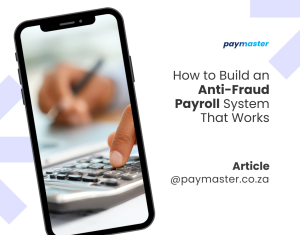Value-Added Tax, or VAT, is a tax added to most goods and services in South Africa. In simple terms, it’s a type of consumption tax that customers pay when they buy things. Because of this, it’s very important for small business owners to understand when they need to register for VAT and how the whole system works.
First of all, knowing the right time to register helps you stay on the right side of the law. Also, understanding how VAT affects your business makes it easier to plan your finances and avoid unexpected costs. So, whether you’re just starting out or growing your business, learning about VAT registration and its rules is a key step toward success.
1. When Is VAT Registration Mandatory?
You must register for VAT if your total taxable turnover goes over R1 million at any point within 12 months. In other words, if your business earns more than this amount from goods or services that are taxable, it’s time to sign up.
To stay on track, regularly monitor your monthly revenue so you can keep an eye on your total turnover. Remember to include all sales that are standard-rated as well as zero-rated when calculating this amount.
Once you realize your turnover has passed the R1 million mark, you need to register with SARS within 21 days. Acting quickly helps you stay compliant and avoid any penalties.

2. Voluntary VAT Registration
You can choose to register for VAT voluntarily if your turnover has gone over R50,000 in the last 12 months. This means even if you haven’t reached the mandatory threshold, you still have the option to sign up.
Before you decide, it’s important to think about a few things. First, consider whether claiming input VAT will actually help improve your cash flow. Also, make sure your record-keeping is organized and meets the required standards — this will make the process smoother.
Finally, take some time to weigh the extra work and costs involved in managing VAT registration against the possible benefits, like getting VAT refunds. By carefully assessing these factors, you can make a smart decision for your business.
3. How VAT Works Once Registered
You must charge 15% VAT on goods or services sold (output VAT) and can claim back VAT on business purchases (input VAT).
Action Points:
- Add VAT to invoices and ensure your tax invoice includes your VAT number.
- Keep valid tax invoices for all input VAT claims.
- Calculate VAT payable or refundable by deducting input VAT from output VAT.

4. VAT Filing and Payment Cycles
Businesses typically file VAT returns every two months using the VAT201 form.
Action Points:
- Track your VAT period (Category A or B) to know your deadlines.
- Submit VAT201 via SARS eFiling and make payment on time to avoid penalties.
- Reconcile your VAT transactions monthly to simplify submissions.
Proper VAT registration and management improve compliance and may provide cash flow advantages—especially for growing businesses.





